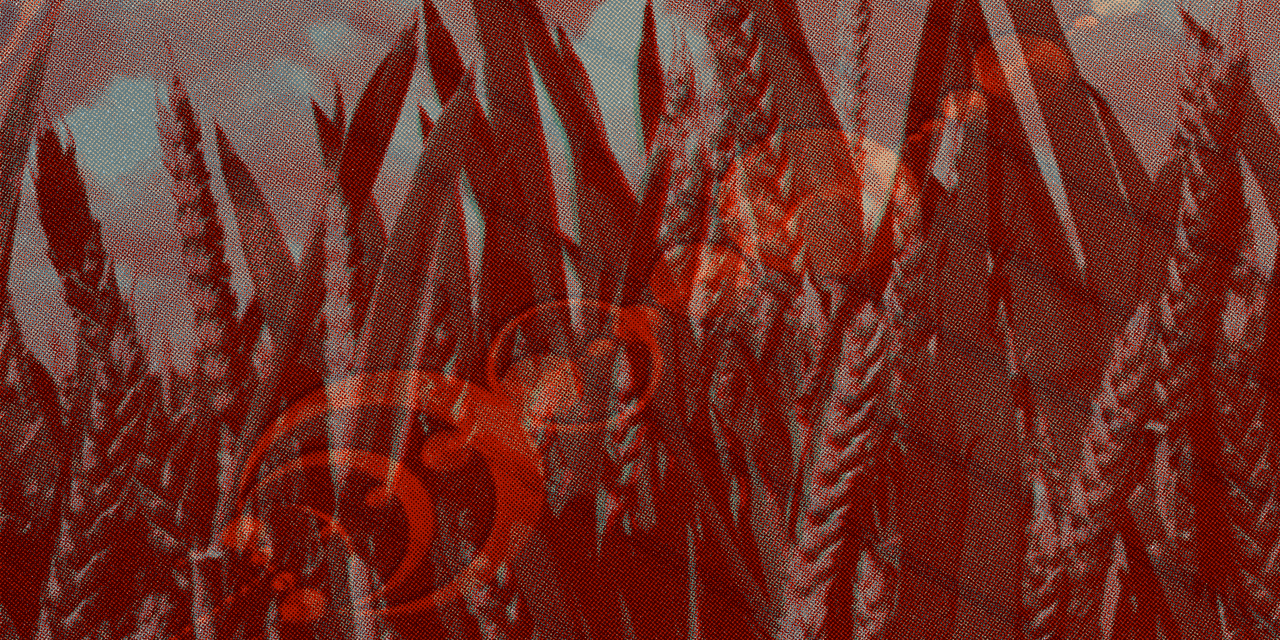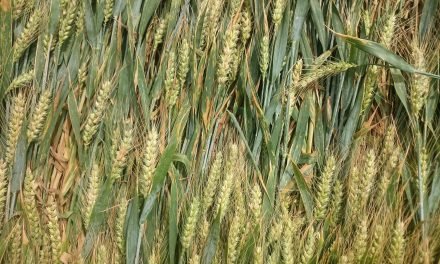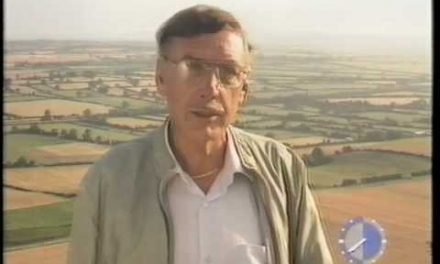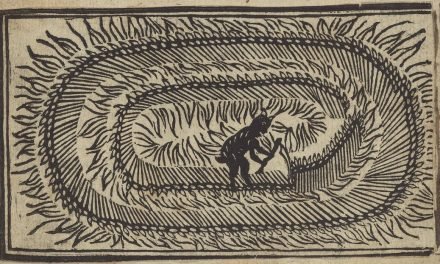Croppies who lived through the eighties and into the early 1990s may well remember how basic the circles were back then. The phenomenon was followed by an ever-increasing media presence as the press and television sought to cover the mystery for their own ends.
Nippon Televison and the BBC’s big moment was 1990’s Operation Blackbird at Bratton Camp. Attempts to film a circle being made quickly descended into embarrassment. Just recall cerealogist Colin Andrews’ backtracking after he had all but proclaimed a few scrappy rings and wonky lines in wheat to be ‘of great significance’. The footage that survives of this event on YouTube is grainy and imperfect, the colours are off-kilter and the audio a little wobbly: the hallmarks of television footage recorded onto VHS (analogue video) cassette. In a world of UHD television and 42” screens, the low definition recording is noticeably hazy. And, of course, the fashions of the time seem rigid and dated.
The recordings from Operation Blackbird represent how things were at the time, albeit with the addition of those visual and audio defects. But unless you were on the escarpment at Bratton Camp on that July day, it (together with written accounts) is really all we have to remember the event.
The footage of Operation Blackbird is never too far away every time The Croppie visits Bratton Camp, no matter the time of year. The view down into the Vale of Pewsey evokes other crop circles from that golden era of the 1980s to 1991: simple circles, rings, pictograms including what look like forks and ladders. They too are recorded on analogue media: 35mm camera film (now reproduced as JPEGs with that same vaguely indistinct, off-colour appearance). It was a time when the crop circle world was simpler, more innocent and more exciting. There was no public internet where researchers could shout ‘wake up’ or ‘isn’t it wonderful that [all] crop circles are made by people’. Cerealogists were looking for answers to a mystery, whether their solution of choice included Earth energies, electrically charged vortices or extraterrestrials.
The Croppie‘s view of the golden era is more than mere nostalgia. It’s hauntological.
An obscure concept in itself, hauntology is described by writer Stephen Prince as ‘work which explores and utilises a misremembered past, lost progressive futures and a conjuring of parallel worlds that are haunted by the spectre of the past.’ Indeed, what The Croppie experiences up at Bratton Camp isn’t a true history. His thoughts are shaped by what he’s seen in print and on film; it neglects those people who were sure at the time that humans were making all crop circles. The allure of the celluloid ghosts is far more ingrained in The Croppie‘s mind.
Nowhere else in the south of England houses the ghosts of history with such poise as Wiltshire. The landscape is scattered with stone circles, barrows, earthworks and hillside carvings of white horses. Popular knowledge of these features and their purpose is sketchy, and like the crop circles themselves, leave as many questions unanswered as they resolve. All have, to a greater or lesser extent, been adopted by the New Age and Earth Mysteries movements as places of power, healing, contemplation or magic. These are locations where, at quiet moments devoid of traffic’s buzz, time is fluid — the date could as readily be 1718 as it is 2018. These places, together with Wiltshire’s ancient trackways, vast grain fields and puzzling military establishments, are laced with fantastic pseudo-histories where atmosphere and expectation can allow the visitor to tap into the past. Some will even have their own anomalous encounters. Wiltshire is, as Prince would argue, one such place inside ‘an imagined Albion of hidden histories and sometimes arcane knowledge, wherein there is still the space or possibility to sidestep some of the more ubiquitous, dominant and monotheistic tendencies of modern day culture and systems.’ There is no more appropriate site for a crop circle.
The misremembered past lives on in today’s crop circles at a complimentary level to their surroundings. Doug Bower and David Chorley’s crop circles were laid down to fool ufologists. They initially wanted self-proclaimed experts to see their work as the traces of landed alien spacecraft. Today’s circle makers appear to have no such motivation. They take to the fields for purposes of ego, or for an increasingly small number, to anonymously create a spectacle which is open to individual interpretation. Yet those The Croppie has encountered will all speak of Doug and Dave with reverence as hugely inspirational figures. Today’s circle makers are so similar to Bower and Chorley yet so different at the same time.
Since the late 1980s the crop circles have held a significant sway over the Wiltshire landscape and human mind, bringing both together in a tight relationship. Today’s mandalas and seven pointed stars represent a misty, off-kilter and out of joint take on the golden era of cerealogy. They are shaped by the past and will continue to be into the future, adding to the romantic puzzle of the county’s ancient landscape.







